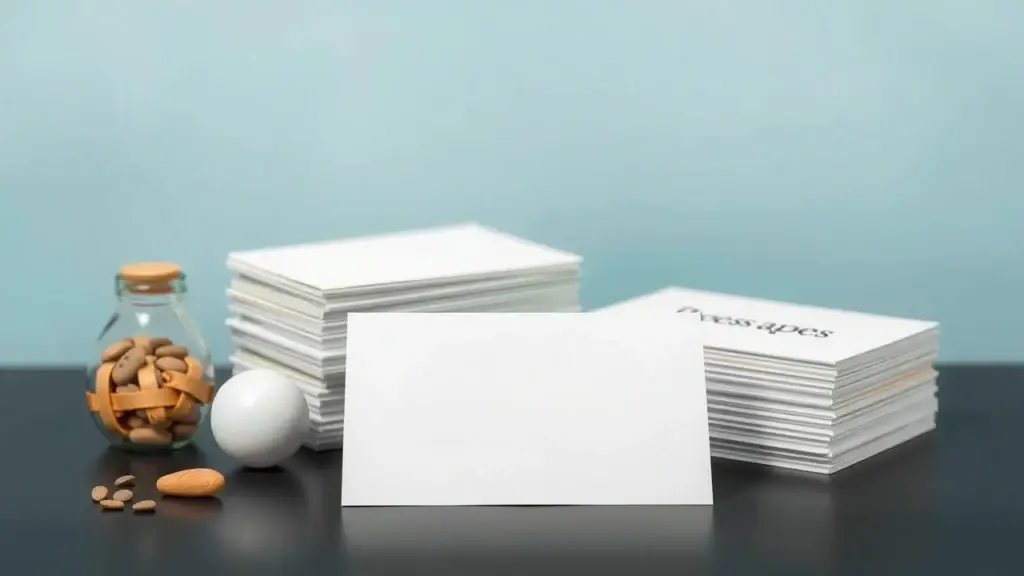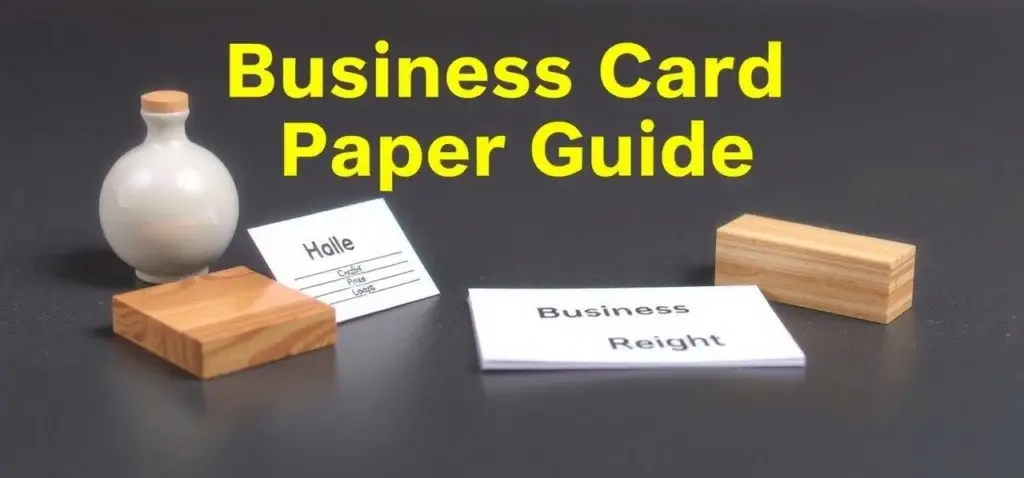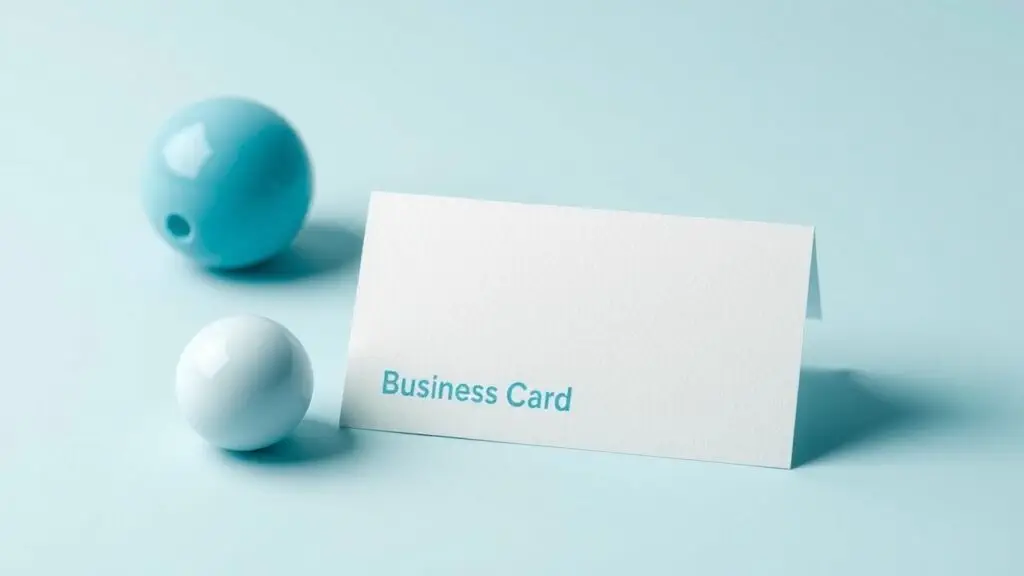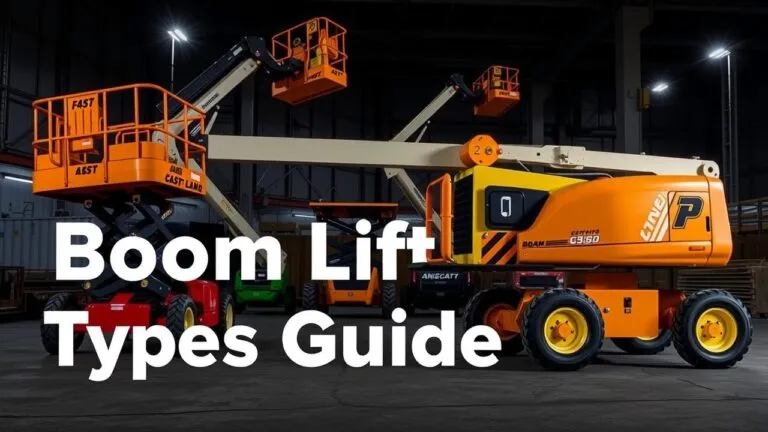Types of business card paper matter for a professional look. This guide covers cardstock, paper weight, and finish options to help you choose the best business card paper for your needs.
What Makes a Business Card Memorable?

A memorable business card can create a strong impression on potential clients and partners. Important elements for this include smart business card design and high-quality business card printing. A great card shows off your brand, showing how professional and creative you are. First impressions are key; an attractive design can spark interest and lead to more conversations.
The look of a business card is very important. Colors, fonts, and layout should match your brand but still be easy to read. Plus, adding special features like rounded corners or embossed text can give a nice touch, making it easier for people to remember you.
The Importance of Business Card Paper Selection
Choosing the right paper is super important when making great business cards. There are several types of business card paper you might consider:
- Premium Business Card Paper: This usually has a heavier weight (often 14pt or higher), giving off quality vibes.
- Standard Business Card Paper: This is typically around 10pt to 12pt thick, making it budget-friendly while still looking good.
- Eco-Friendly Business Card Paper: Made from recycled materials or sustainable sources, these options are great for those who care about the planet.
The paper you choose affects how your cards feel and look. Premium papers can show richer colors and clearer images than standard ones.
This Guide’s Focus: Navigating Business Card Paper Options
In this guide, we’ll look at different types of business card stock available now. Knowing how to pick the right materials will help you make smart choices when designing cards that show your professional image.
We will talk about important factors like thickness variations—often called “paper weight”—and compare coated versus uncoated finishes, plus textured options that add some flair. By understanding these things better, you’ll know how to pick the best paper for your designs or logos while keeping your budget in mind too.
This overview aims to make it easier for you to choose business cards that fit your style!
Understanding Business Card Paper Weight and Thickness
Points vs. GSM: Deciphering Business Card Weight
When picking paper for business cards, knowing about weight is super important. There are two main ways to measure paper: points (pt) and grams per square meter (GSM). Points tell you how thick the paper is; one point is equal to 1/1000 of an inch. For example, a 14pt cardstock is thicker than a 10pt cardstock. On the flip side, GSM shows how heavy the paper is over one square meter.
Heavier papers often feel more solid. They can give off a vibe of quality and professionalism. A typical business card can be between 14pt and 32pt, or about 300-600 GSM. Understanding these measures helps you pick the right kind for your design and budget.
How Paper Weight Impacts Perceived Quality?
The weight of your business card paper can change how people see your brand’s quality. Premium business card paper usually starts at around 16pt or higher, which gives it a strong feel that suggests reliability. On the other hand, lighter papers might seem flimsy or less serious.
Thick business cards not only feel nicer but also last longer when handed out—perfect for networking events where first impressions matter! Thin papers might work for short-term uses but could hurt your brand’s image if they seem cheap.
Common Business Card Paper Weights: A Comparison
Here’s a quick comparison of common weights used in business cards, along with their pros and cons:
| Weight | Thickness (Points) | Advantages | Disadvantages |
|---|---|---|---|
| 14pt | ~0.014 inches | Affordable; good balance | Might feel too light for some people |
| 16pt | ~0.016 inches | Strong yet budget-friendly | Slightly higher cost |
| 18pt | ~0.018 inches | Looks premium; durable | Costs more |
| 24pt | ~0.024 inches | Very thick; gives a high-end feel | Higher production costs |
| 32pt | ~0.032 inches | Super durable; luxury look | Most expensive option |
Choosing the right type of business card paper means thinking about looks and usefulness while also keeping an eye on your budget.
Coated Business Card Paper: Gloss, Matte, and Silk
Coated business card paper comes in different finishes, each adding a unique touch to your cards. Choosing the right one can make your cards stand out and reflect your brand well.
Gloss Coated Paper: High Shine, Vibrant Colors
Gloss coated paper is shiny. It makes colors pop and look more lively. If your design has bright images or bold graphics, this paper works well. The shiny surface reflects light, which draws attention. But remember, it’s hard to write on because of its slickness.
Pros:
- Bright colors
- Attention-grabbing look
- Great for photos
Cons:
- Hard to write on
- Can show fingerprints or scratches
Matte Coated Paper: Subtle Elegance, Professional Appeal
Matte coated paper feels smooth and soft. It looks professional and classy, perfect for businesses that want to seem refined. Unlike glossy finishes, it’s easier to write on without smudging the ink. This makes matte-coated cards popular for sharing contact information.
Pros:
- Classy look
- Easy to write on
- Reduces glare
Cons:
- Colors aren’t as bright as gloss
- Can wear out faster
Silk Coated Paper: A Balanced Approach
Silk coated paper offers a mix of gloss and matte. It feels luxurious but isn’t too shiny. This premium business card stock fits many styles—be it modern logos or classic designs—making it a good middle ground.
Pros:
- Soft feel with a slight shine
- Good color quality
- Works for various designs
Cons:
- May cost more than other types
- Less common than standard options
Choosing the Right Coated Finish for Your Design
When picking a finish for your business cards, think about what fits your brand and message best:
- Brand Image: Luxury brands might prefer silk or matte finishes.
- Design Elements: Bright colors shine with glossy coatings; intricate designs often suit matte better.
- Functionality Needs: If you want people to write on the card, go for matte-coated papers.
These tips help ensure your choice matches both how you want to look and what you need when designing effective business cards.
Uncoated Business Card Paper: Texture and Tactile Appeal

Uncoated business card paper is popular for its unique texture and feel. This kind of paper gives a natural touch that can impress your clients. It’s a top choice for businesses that want to show off their eco-friendly side. With many sustainable options available, it’s easy to make a great impression while being kind to the planet.
Uncoated Paper: Natural Feel and Eco-Friendly Options
Uncoated paper has a raw, matte finish that many people find attractive. This surface helps ink soak in better, giving bright colors without any shine. If you care about the environment, you’ll be glad to know there are eco-friendly business card paper options out there. Recycled business cards made from post-consumer waste not only cut down on trash but also show that you care about sustainable practices.
When you pick uncoated paper for your cards, think about:
- Natural Appearance: The matte finish helps your text stand out.
- Eco-Friendliness: Many brands offer recycled or sustainably sourced materials.
- Print Quality: Great for detailed designs because it holds ink well.
Linen and Cotton Business Cards: Luxury and Sophistication
If you’re after a luxurious look, linen and cotton papers are fantastic choices for textured business cards. Linen paper has a light woven pattern that adds character without taking over your design. Cotton paper is soft yet strong; it’s made from pure cotton fibers and feels nice in hand.
These types of papers can make your brand feel more upscale:
- Linen Paper: Gives a classic vibe with some texture.
- Cotton Paper: Soft and luxurious; perfect for high-end branding.
Both options make your cards feel much nicer than regular paper.
Recycled Uncoated Paper: Sustainability and Professionalism
Using recycled uncoated paper shows that you value both style and responsibility. By going with this option, you’re not just caring about how your cards look but also how they’re made. These papers keep high quality while being eco-friendly, which is key when making a first impression.
Here are some benefits of choosing recycled uncoated paper:
- Sustainable Materials: Made from recycled content to help reduce waste.
- Professional Look: Keeps things sharp in print while having an organic feel.
This combination makes recycled uncoated papers popular among business owners who want both charm and responsibility.
Textured Uncoated Options: Exploring Unique Finishes
Textured uncoated options let you explore finishes beyond the usual looks by adding interesting patterns or surfaces into your designs. Specialty papers like felt-finish or embossed textures provide unique features that make your card stand out from the crowd.
When thinking about textured options, consider these unique finishes:
- Felt Finish – Has fabric-like qualities for warmth.
- Embossed Patterns – Gives raised designs that add depth.
- Specialty Papers – Includes handmade kinds for an artisanal touch.
Adding these elements to your design can create memorable experiences every time someone receives one of your business cards—an important part of making connections!
Specialty Business Card Papers: Unique Looks and High-End Appeal
When choosing a business card, the paper type can really change how people see your brand. Specialty papers can give you unique looks and high-end appeal. Let’s check out some popular options.
Metallic Business Cards: Making a Statement
Metallic business cards grab attention with their shiny surfaces and luxurious feel. These premium business card papers have metallic finishes that add depth and dimension. They’re perfect for businesses wanting to make a bold statement, especially in creative fields like fashion or design.
The good thing about metallic cards is they stand out in a pile of regular cards, showing off sophistication and quality. But keep in mind, they often cost more due to the special printing needed to create them.
Plastic/Synthetic Business Cards: Durability and Modernity
Plastic or synthetic business cards are tough—much tougher than paper. Made from materials like PVC or other synthetic compounds, these cards are waterproof, tear-resistant, and long-lasting. They are ideal for professionals who need their contact info available in different environments.
These modern cards let you use bright colors and intricate designs without fear of fading over time. While plastic business cards might cost more than paper ones, their durability makes them a smart choice for many entrepreneurs looking for reliability along with style.
Other Specialty Papers (e.g., Kraft, Hemp, Bamboo): Sustainable and Unique Choices
Besides metallics and plastics, there are several eco-friendly specialty papers worth checking out:
- Kraft Paper: This paper has a rustic charm. It’s sturdy yet lightweight.
- Hemp Paper: This eco-friendly option combines luxury with sustainability. Hemp fibers create strong yet soft textures that work great for high-quality prints.
- Bamboo Paper: Bamboo products mix sustainability with style. They are not just good for the environment but also look great thanks to their unique texture.
Kraft Paper: Rustic Charm with Practical Benefits
Kraft cardstock gives an earthy feel that suits brands wanting a natural look in their marketing materials. The brownish color adds warmth while still being flexible enough for different designs—from simple logos to detailed graphics—making it fitting for various industries.
Hemp Paper: Eco-Friendly Luxury
If you care about sustainability but don’t want to give up on style, hemp paper is one of the best eco-friendly business card options! Its smooth finish allows vibrant colors while showing commitment to environmental responsibility—a great pick if you aim for green branding!
Bamboo Paper: Sustainability Meets Sophistication
Bamboo paper is becoming popular among consumers who want stylish choices that align with ethical values! It combines strength and beauty into one package, making these types competitive against traditional options when it comes to looks!
Choosing the right specialty paper can greatly boost your brand image by showing core values through thoughtful material selection that fits your target audience’s preferences!
Paper Finish: Impact on Print Quality and Brand Image

Understanding Paper Finishes: Gloss, Matte, Linen, etc.
Choosing the right paper finish for business cards is important. Different finishes can change how your card looks and feels. Here are the main types:
- Glossy Paper: This type has a shiny surface. It makes colors and images bright. Glossy paper works great for designs with vivid graphics or photos. But watch out! It can show fingerprints and glare.
- Matte Paper: Matte paper doesn’t reflect light. This makes it easy to read text without distractions. It’s a good choice if your design has lots of words.
- Textured Paper: Textured finishes give a unique feel to business cards. Options like linen or felt can make your card memorable. Textures often suggest quality and craftsmanship.
Selecting the right paper finish affects print quality and how people see your brand.
Finish Selection Based on Printing Method
The way you print your cards influences what paper finishes you can use:
- Offset Printing Compatibility: This method works well with many finishes, including glossy and matte papers. It gives high-quality results, which is perfect for large orders.
- Digital Printing Compatibility: Digital printing usually prefers uncoated papers since they absorb ink better. Some digital printers can also handle glossy stocks, but always check before starting.
Choosing the right finish based on printing method helps get good results while keeping costs in check.
Matching Paper Finish to Brand Identity
Your paper finish should match your brand image and message in custom business card printing. A sleek gloss might fit tech companies that want a modern look. Meanwhile, businesses that care about the environment may like recycled matte options to show their values.
Here are some points to think about when matching the finish:
- Brand Personality: Is your brand fun or serious? Pick finishes that match.
- Audience Expectations: Know what looks good in your industry.
- Design Integration: Make sure the finish complements logos or graphics on your card.
By carefully choosing a paper finish that aligns with print quality and brand identity, small business owners can create strong first impressions with their business cards.
Choosing the Right Business Card Paper: A Step-by-Step Guide
Choosing the right paper for your business cards is very important. It shows your brand identity and affects how potential clients see you. This guide will help you pick the best type of business card paper.
Defining Your Brand Identity and Target Audience
Your brand identity matters a lot when it comes to picking business card paper. Think about what message you want to send. If you work in a creative field, using premium business card paper with unique textures can help you stand out. But if you’re in a more traditional industry, standard business card paper may work just fine.
Also, consider your target audience. Do they prefer eco-friendly options? Or do they like something that feels high-quality? Matching your paper choice with your brand values and what your audience likes will help your cards make a good impression.
Setting a Budget for Your Business Cards
Setting a budget is key when choosing business card materials. Prices can differ based on the type of paper. Premium options often cost more than standard ones. If you need cheap business card paper, remember that lower-cost options might not last as long or look as nice.
It’s smart to have a budget in mind from the start. This way, you can look at different types of paper without going overboard on spending while still getting a nice final product.
Selecting the Ideal Paper Type Based on Your Design
Your design can help decide which cardstock is best:
- Coated vs Uncoated: Coated papers have a smooth finish that’s great for bright colors but may not work well with some printing methods.
- Textured Options: Textured papers add interest but might not show print details as clearly.
- Weight Matters: Heavier cardstock usually feels better; common weights are between 14pt (standard) and 32pt (premium).
Choosing the right paper type for your design improves both how it looks and how it functions when printed.
Testing a Sample Before Ordering
Before placing a big order, it’s smart to get test prints from different places showing various types of papers you’re considering. This helps check quality, like color accuracy and feel against what you planned during the design stage.
Testing samples helps make sure each choice fits your branding goals and looks sharp once printed—leading to confident decisions about which business card stock is best for you!
FAQs About Types of Business Card Paper
What types of paper are best for business cards?
Common types include coated, uncoated, textured, and recycled papers. Each type offers different finishes and feels, suitable for various branding needs.
How does paper weight impact my business card?
Heavier paper often feels more professional. It gives a sturdy impression compared to lightweight options that may seem flimsy.
Can I use recycled paper for business cards?
Yes, many businesses opt for eco-friendly recycled papers. These options help reduce environmental impact while maintaining quality.
What is the difference between coated and uncoated paper?
Coated paper has a shiny finish that enhances colors. Uncoated paper has a matte finish that absorbs ink well and is easier to write on.
How should I choose the right thickness for my business card?
Consider your brand image and how you want your card to feel in hand. Thicker cards often convey luxury, while standard weights work for more casual branding.
Additional Insights on Business Card Paper Selection
- Understanding Business Card Paper Types: Explore cardstock variations like heavyweight or lightweight options.
- Choosing Business Card Paper Weight: Learn about common weights like 14pt, 16pt, or 32pt cardstock for different budgets.
- Standard vs. Non-Standard Sizes: Familiarize yourself with dimensions like standard size (3.5 x 2 inches) or square cards.
- Specialty Business Card Options: Consider unique choices such as metallic or plastic/synthetic cards for a modern look.
- Paper Finishes and Effects: Investigate finishes like matte, glossy, UV coating, or lamination to enhance durability and aesthetics.
- Printing Compatibility: Ensure your chosen card stock works with your printer—whether it’s laser or inkjet.
- Sustainable Choices: Seek out eco-friendly materials that support sustainability efforts without compromising style.
- Exploring Customization Options: Look into custom shapes like rounded corners or perforated edges to make your card unique.
- Finding Suppliers: Research business card paper suppliers that offer quality options at competitive prices.
- Testing Before Committing: Always ask for samples to evaluate texture and weight before placing a large order.
By focusing on these factors, you can select the perfect type of business card paper that resonates with your brand identity while appealing to your target audience.
Related Topics
- Types of business card finishes
- Types of business card printing methods
- Types of business card paper weights
- Types of business card coatings
- Types of specialty business card papers
- Types of eco-friendly business card paper
- Types of business card sizes
- Types of business card designs



Types of Business Card Paper: A Guide to Cardstock, Paper Weight & Finish Options